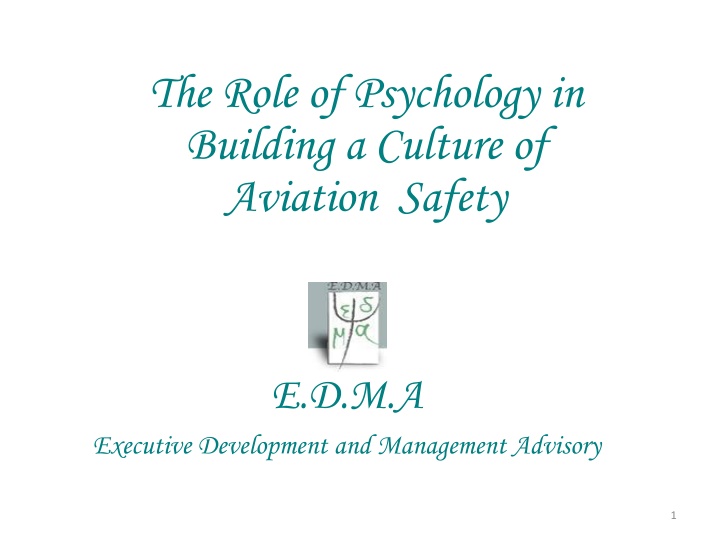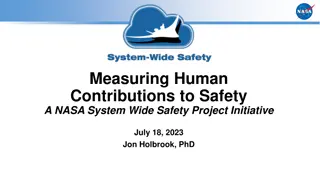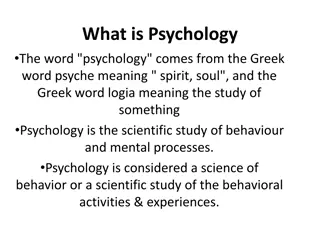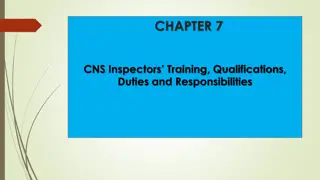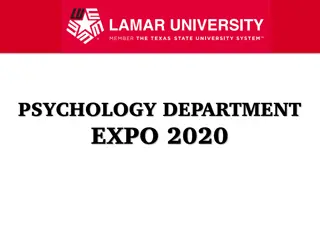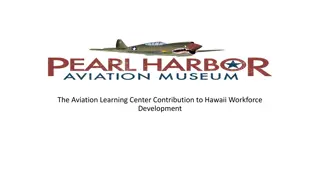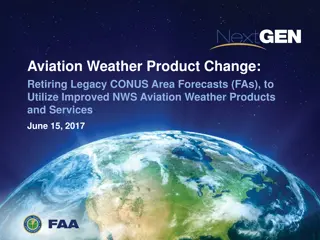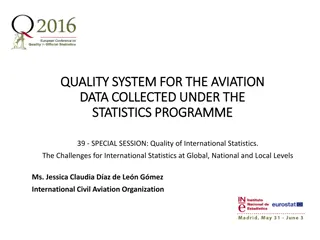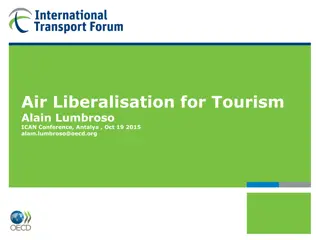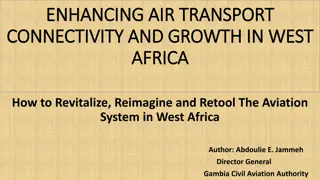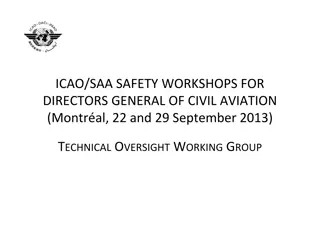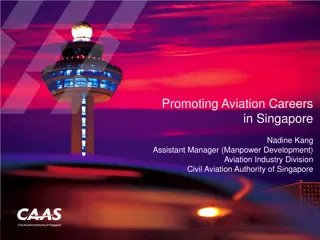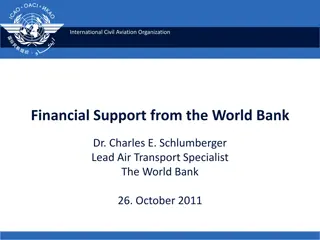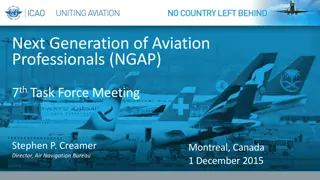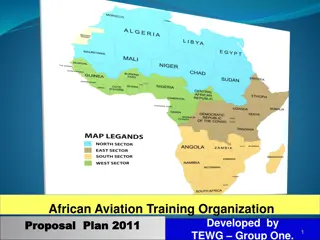The Role of Psychology in Aviation Safety Culture
Psychology plays a crucial role in building a culture of aviation safety by studying and preempting the psychological stressors faced by aviation staff. Aviation psychology focuses on human behaviors, cognitive functioning, and emotional processes in the complex aviation environment, with a history rooted in military aviation training. Its contributions include profiling pilots, analyzing human behavior, assessing working conditions, preempting challenges, creating awareness, and providing psychological support.
Download Presentation

Please find below an Image/Link to download the presentation.
The content on the website is provided AS IS for your information and personal use only. It may not be sold, licensed, or shared on other websites without obtaining consent from the author.If you encounter any issues during the download, it is possible that the publisher has removed the file from their server.
You are allowed to download the files provided on this website for personal or commercial use, subject to the condition that they are used lawfully. All files are the property of their respective owners.
The content on the website is provided AS IS for your information and personal use only. It may not be sold, licensed, or shared on other websites without obtaining consent from the author.
E N D
Presentation Transcript
The Role of Psychology in Building a Culture of Aviation Safety E.D.M.A Executive Development and Management Advisory 1
Introduction According to Arthur David Beaty, writer, pilot, and psychologist, the second highest reason for a pilot to lose his license is mental, next to a heart attack. (The Naked Pilot, 1991) 2
What we need to know? A branch of Psychology that studies/ preempts and investigates the psychological stressors/ problems encountered by the aviation staff mainly: Pilots, Engineers, Cabin Crew and ATC What is Aviation Psychology? A discipline that focuses on behaviors, actions, cognitive functioning and emotional processes of humans in the complex environment of aviation systems 3
What we need to know? Grew out of the need to refine and define a more objective and less time-consuming means of selecting candidates for military aviation training History of Aviation Psychology World War I, the number of pilots needed increased dramatically, and the initial exploratory research into human abilities and traits that predict success in aviation began. World War II, the military selection program known as the Pensacola Project was initiated, ushering in a new era in aviation psychology. 4
What we need to know? With time, Aviation Psychology evolved and intervened in different areas of Aviation, both in military and commercial set-ups. Psychologists were allowed in other areas than selection and/ or recruitment. 5
Contributions of Psychology in Aviation Profiling pilots and assessing their suitability to a particular airline Analyzing and understanding human behavior Assessing and studying the working conditions and their consequences on performance and safety of staff Preempting possible challenges that might jeopardize operational staff safety Creating awareness whenever possible on the areas of concerns in an airline Providing a non-judgmental psychological support to staff and their family whenever needed (thru E.A.P.) 6
Relationship between Psychology and Aviation Safety Aviation Safety Applied science of people in many areas of aviation industry Psychology Science of people - Creating a culture of aviation safety - Increased aviation safety 7
Areas of Professional Involvement (1) 1) Psychometrics As a preemptive approach to ensure higher safety We recommend Psychometric Assessment for: Ab-Initio (Cadet Pilots) Direct Entry (Pilots) Upgrade For pilots on a periodic basis (i.e., after every 5 years) After 60 years (i.e., annually) Aircraft Engineers ATCs Initial profiling of cabin crew 8
Areas of Professional Involvement (2) 2. Clinical Evaluation/ Diagnostic 3. Counseling 4. Psychotherapy 5. Family Intervention 6. Employee Assistance Program 9
Employee Assistance Program (EAP) 6) EAP is a support program for employees when in crisis situation, be it professional, personal, or family-related in nature. - The service is basically focused in offering short-term interventions for the concerned employees and their families, wherever applicable. - It is private and confidential. - Clients can either be self-referred, referred by the management, colleagues, or by attending physicians. 10
Employee Assistance Program Process Referral Diagnostic Intervention Outcome Intake Interview Grounding Reinstatement Doctors Person is fit to work Counseling Employers Psychometric Assessment Psychotherapy Colleagues Psychological Analysis/ Evaluation Self 11
Areas of Professional Involvement (3) 7) Human Factor & Investigation - Human error is implicated in most, if not all, aviation accidents. -Approximately 70-80% of aviation accidents can be contributed to Human Factors as the determined cause (Reason, 1990). -Accident investigators, therefore, need information, tools, and procedures to discover the role human error has played in an accident/incident being investigated. 12
Areas of Professional Involvement (4) 8) Nowadays, psychologists are being hired by big aircraft manufactures to help in improving their product. They are hired in labs to assist in simulating human behavior specially with regard to studying performance challenges facing the pilots/ ATC/ operational staff vis-a-vis fatigue/ burn out/ stress/ anxiety/ etc. 13
Key Dimensions of the Paradigm A A-wareness S S-oundness P P-ersonality E E-ffectiveness C C-ompetence T T-echnical Know-how S S-afety 15
A A for Awareness Situational Awareness Self- Environmental Awareness awareness 16
S S for Soundness Sound Judgment, sound advice Sound heart, sound mind Sound moral values, sound reasoning Soundness 17
P P for Personality In reference to the 2004 report by NASA s Langley Research Center, the basic "pilot personality profile" is of an emotionally stable individual who is: Conscientiousness Deliberation Competence High High Dutifulness Achievement Striving Anxiety Vulnerability Angry Hostility Low Low Impulsiveness Depression 18
E E for Effectiveness In aviation, one s effectiveness person s manner of self-expression, of dealing with people and in one s principles. Hence, being effective means: Being assertive and not arrogant Not taking corrections personally Being relaxed but not casual Having a perfect balance of decisiveness & care effectiveness is normally seen in a 19
C C for Competence Competence Competence is the ability of the individual to do the job properly. We assess soft competencies that relate to executive functions and not the technical competence, i.e.: Ability to lead a team Ability to plan & organize Ability to make decisions especially in critical situations Emotional Stability Communication Skills Interpersonal Skills 20
T T for Technical Know-how Know Know- -how to accomplish something While we assess some skills that can contribute to the person s increased technical knowledge, we work hand-in-hand with the his/her supervisor, i.e., Training Captain, Head of Ops, Fleet Captain, etc.) in adequately and properly establishing the same. how is a term for practical knowledge on how 21
S S is for Safety Emotional Social Physical Six Dimensions of Wellness Dr. Bill Hettler founder of National Wellness Institute Spiritual Occupational Intellectual 22
Current Challenges and Stumbling Blocks The appetite in utilizing the resources of Psychology in aviation varies among some airlines. The over trust of some professional pilots/ safety staff/ airline human resources in their own selection Skepticism surrounding the science of Psychology among some airliners Misperception that since operating newest aircraft safety is high anyway 23
Thank you for your attendance! Q & A For further clarifications, email me at edma@edmaexec.ae 24
